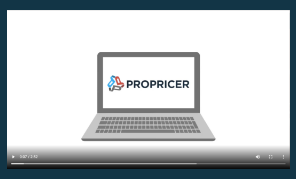The buying business is built on relationships in both the commercial and government arenas. But to be blunt, perhaps less—both in quantity and quality—during agency acquisition than in the private sector.
When training the more junior pricing and acquisition employees in your government agency, keep in mind that complex, strategic, high-value direct and proposal buys require solid yet not intimate relationships with a spectrum of government suppliers, rather than a select few.
The value buy is always the best, no matter if it results in tested loyalties or hurt professional feelings. Above all, train your incoming associates to respect the contracting and direct-vendor firms they do business with, yet always manage this collection of companies to their advantage. 1
Buy from a position of leverage, not assault
A word about modality: In agency buying, you often find yourself in a position of power, buying a product in a market full of providers competing for your business.
Leveraging your power and playing “buy hardball’ in these situations can be your best approach. However, avoid cut-throat tactics that undermine your vendors or force them to operate at a loss. These actions can come back to haunt you in the long term.
Rely on a collective of advisors, not one
When agencies work with a collection of trusted partners, you often benefit from a wellspring of ingenuity. For example, wide-scale collaborations typically happen in defense agencies, where militaries work with several partners using the latest technologies to create aircraft, weaponry, and defense systems—more flexibly than through a single vendor. 3
As you train incoming pricing analysts and proposal evaluators, it’s wise to bring them up to rely on a bevy of vendors who provide excellent services or products at a fair price. We have some ideas for you.
But first, let’s see where and why vendor lock-in often happens.
What is vendor lock-in?
Vendor lock-in is where government teams—especially tech teams—often find themselves embroiled. It’s when you’re suddenly so dependent on a specific vendor that you cannot shift away from them.
It’s a power dynamic that emerges over a while, often in IT procurement. You can’t make changes, such as moving a system or adjusting an interface, because you’re stuck with how much faster your sole vendor can usually move.
But vendor lock-in usually delivers you gradually worsening product over time, at higher costs. It’s great for vendors, though, who benefit from a constant customer—you metaphorically sitting on your hands—and an always-increasing revenue stream.
Below are some ways to help yourself and the people you train avoid vendor lock-in:
1. Do business with those who use open-source software
Under the current Cloud Smart Federal contracting strategy that encourages cloud use in both “build” and “buy” scenarios, the mass adoption of software standards can take your agency a long way in outsourcing to various trusted vendors. While this sometimes hampers innovation, the standards can save you and the people you train countless hours, dollars, and headaches.
Open source lets you construct architectural strategies that help you work with various vendors and allow a “build” approach to seamlessly take over from a “buy” approach and vice versa. You’ll gain better outcomes, spend taxpayer money more wisely, and better impact your missions. 5
2. Go with the vendors that make future change easier
Before solidifying a relationship with a group of vendors or contractors, always look for a way out. Have an exit strategy. Avoiding vendor lock-in is all about finding ways to keep your future options open.
Above all, preserve your ability to make future changes. In the IT realm, safeguard your ability to make technology adjustments yourself. This state usually depends upon staffing for a specific technical or operational capacity, especially if you choose vendors for service delivery projects.
You may need to invest in—and teach your juniors to invest in—a baseline of internal capacity. But over the long term, your savings from not being stuck with one vendor will more than deliver ROI for your investment.
In other cases, you can maintain future-state control by writing better procurement contracts with your vendors. 2
3. Own your digital products and ensure you can move them
Data. In the digital or intellectual property (IP) realm, you must ensure you own the data generated or collected by a vendor-owned system. This data can include:
- User account information
- Case management data
- Documents
- Financial records
All the things that, if you were to switch from your vendor's digital system to another's, you'd be able to easily access and move. If you don't ensure your agency is the data owner from the outset, you'll need to start over to bring on a new vendor
You don’t want you or your subordinates to be in a situation where you have to beg for data before initiating a competitive procurement for a replacement system that the same vendor could participate in (it happens all the time).
In the first contractual document you write, note that your agency is the owner, including user account data stored in the system.
Pro Tip: Even if you make sure you own the data, getting it out of one system to re-use it in another is often a problem. Make sure any digital platform you use has comprehensive export features and, again, has an exit strategy documented for any significant system.
Interface elements. These are websites or web app elements that your end-users use to interact with your agency or its service.
Because vendors specialize in their building and maintenance, interfaces usually require you to hire a specialist firm through a direct procurement or proposal process.
But sometimes, agencies will outsource the entire online service and its related “context” entirely—and then users of your app or site interact with the vendor’s interfaces directly instead of your agency’s.
There’s a solid argument that you should never outsource front-facing service delivery functions like domain ownership, site servers, and DNS name servers. And if they are, ownership is documented at the outset of the relationship.
Here, vendor lock-in comes from the fact that, over time, people using the external vendor’s service will get used to it and identify the vendor and their products as the way to receive a given public service or to interact with your agency. As a result, your agency is lost behind the scenes. 2 Better to spread these duties over a series of qualified shops.
Code. Most agencies depend on a ton of software code, whether crafted for customized systems or merely tweaks of off-the-shelf software. Most are written or prepared by contracting firms.
Historically, the contractors own the code and its structures. There are stories of custom software spinning off to become a commercial product from an agency product—then licensed back to that same government agency. Make sure you own your code; get this in writing as part of your proposal or procurement process. 2
4. Avoid long-term contracts
Let’s face it: There are obvious reasons why you and your trainees want to set up long-term single-source contracts. The labyrinthian nature of the government procurement process is the most obvious one.
Embarking on a complicated procurement process every few years isn’t attractive to anyone, so you might be tempted to set up 5- or 10-year contracts with a single service provider.
Talk yourself and your people out of this. Think of it as deliberate vendor lock-in (the other forms are more “aggravated”).
Transformation devotees—digital and otherwise—shake their collective heads when yet another government agency signs a single vendor into a decade-long contract.
The only thing constant in the procurement world is change. What you need now will be drastically different in 10 years. 2
5. Diversify to connect the military’s joint forces
More than 100 contracting firms currently collaborate on various aspects of the Joint All-Domain Command and Control (JADC2), breaking the DoD’s longstanding habit of awarding work to just one.
This sweeping initiative follows more than 10 years of trying to open the DoD’s contracting ranks and connect the technologies that embrace communication among the servicepeople working in all military branches.
For several years, the DoD has had to stay ahead of other international governments’ initiatives that have relied upon innovative commercial technologies such as AI, ML, and predictive analytics. Diversification in its vendor base is the only way to do this.
Juniors under your direction will undoubtedly see much future work in building an Internet of Military Things, according to Ars Technica. And according to Wired, wearable devices will soon automatically communicate and exchange information with war machines, weapons, and satellites, giving our service people and their counterparts in allied nations a faster, more precise understanding of field missions. 3
6. Do consistent business with an ever-growing group
You’ve been there. When vendor delivery goes sideways on a single-source contract or project, your expenses as an agency can remain higher than if you had outsourced to a group of vendors.
When your agency breaks free from an isolated infrastructure, shifting to the cloud and using several cloud-based applications and databases, you would never think of returning to just one service. Therefore, it’s wise to train your people to develop several dependable relationships so that when one looks like it might take advantage of a situation or fall, you have several more in your corner.
7. Break free from Microsoft during proposal analysis
Just as you should carefully curate many sources of value in product, service, and technology, you should also apply the concept to your on-premises software—specifically, your proposal pricing software.
Rather than let Microsoft Excel handle all dimensions of your proposal analysis, diversify and give ProPricer Government Edition a try—especially in the areas of vendor contract modeling (a vast improvement), proposal submission comparison (major simplification), and price version comparison (ditto).
Contact us today for a comprehensive demo. The next generation of proposal pros under your wing could thank you for discovering one of the best value buys in contracting today.
Sources
- Positive Purchasing: The Five Factors That Shape How We Buy
- Sean Boots Blog: Rule Number 1 - Avoid Vendor Lock-In
- Now Blog: Avoiding Vendor Lock-In Results in Better Outcomes
- Immuta Blog: The Myth of Vendor Lock-In - Build vs. Buy in the Federal Market




